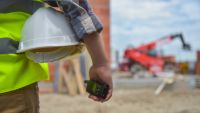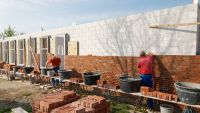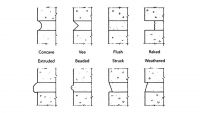Retrofitting Existing Masonry Buildings to Resist Explosions
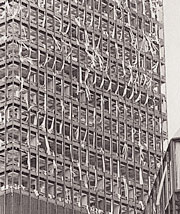 Figure 1. Widespread damage to conventional glazing. Photo courtesy of G.C. Mays and P.D. Smith |
For nearly 20 years, Cintec International, Ltd., based in Newport, South Wales, and its sister company in the U.S., Cintec America, Inc., have manufactured specialized anchors for reinforcing, strengthening and repairing all types of existing masonry structures around the world. Retrofitted, reinforced masonry support anchors are comprised of stainless steel sections, a grouting sock and an engineered grout. Installation is performed by precisely drilling holes using wet or dry diamond coring technology. More recently, Cintec anchors have been used to improve the load-carrying capacity of masonry arch bridges and the impact resistance of parapets, as well as to provide seismic protection in multi-story masonry structures.
The tragic events of September 11 have served to highlight the vulnerability of existing structures to terrorist attack in the United States. All western democracies are now acutely aware of the apocalyptic consequences of a well-orchestrated attack on high-profile government facilities and other related targets. Many of these buildings are historical, ornate, listed and constructed using traditional techniques with masonry elevations. Many of the modern retrofitted reinforcement techniques used to protect these structures against terrorist attacks are unsightly, inelegant, intrusive and inappropriate. However, security specialists are well aware that while there might be little that can be done to defend a building against an aircraft attack, much can be done to defeat the more traditional car bomb and bullet. This article will focus attention on some of the methods available to strengthen existing masonry structures and provide resistance to the effects of a blast attack.
Limitations
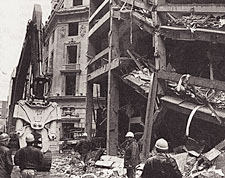 Figure 2. Failure of the connections in a precast concrete frame. Photo courtesy of G.C. Mays and P.D. Smith |
Considerations
In strengthening an existing masonry building to resist the effects from blasts, structural engineers have to consider a number of conflicting requirements. Some of these include:
Stand-Off
Stand-off, or to use the U.S. term "set-back," is the prerequisite for all blast mitigating solutions and is often the cheapest. It can take many forms: open areas, car parks, pedestrian-only zones or even sacrificial buildings, to name a few. It may also be possible to create sufficient stand-off using low-level walls, perimeter fences or barriers. However, in locations where adequate stand-off cannot be achieved, it is necessary to either reduce the size of the threat (e.g., by restricting the size of the delivery vehicle) or provide some measure of structural protection.
Prevent the Blast Wave from Entering the Building
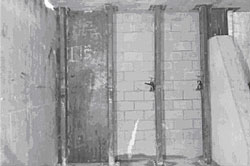 Figure 3. Steel column and plate. Photo courtesy of Cintec |
Windows
The most vulnerable parts of any building are the windows. Considerable research and development has taken place around the world to determine the best methods of protecting these vital parts of a structure. For many years, one of the most expedient measures has been to apply Anti-shatter Film (ASF) combined with Bomb Blast Net Curtains (BBNC). However, manufacturers only guarantee ASF for 10 years, and BBNC requires regular cleaning and obstructs the view. Removal of ASF is time-consuming and labor-intensive, and studies have shown that once two cycles of ASF and BBNC has been applied and removed, it may have been more cost-effective to install blast-resistant glazing from the outset.
Protect Occupants
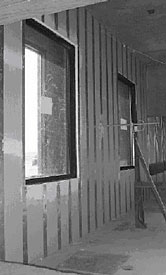 Figure 4. Steel stud partition wall and window. Photo courtesy of Cintec |
Prevent Structural Failure
Regrettably, there have been many explosive incidents in which the victims have survived the initial attack only to lose their lives when the building subsequently fell down. Two of the most important factors structural engineers have to consider are robustness and redundancy. Robustness is a measure of the building's ability to cope with hazards in an acceptable way. Redundancy relates to a structure's ability to transfer loads into alternate areas. Buildings that are robust and structurally redundant are capable of surviving blast loads; buildings that are not tend to suffer badly (Figure 2).
Reinforcing Existing Masonry Walls
The philosophy behind reinforcing existing masonry walls is to provide increased strength along with improved ductility and/or "catcher" (restraint) systems wherever possible. There are several ways of achieving this, depending on the size of the threat, type of wall (loadbearing or infill) and degree of fenestration.
Steel Column and Plate
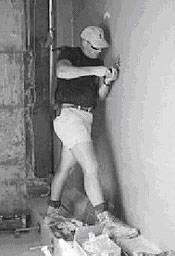 Figure 5. Elastomeric spray applied to hollow concrete block (CMU) wall. Photo courtesy of Cintec |
Steel Stud Partition
Steel studs (as opposed to timber studs) are used in many forms of modern building construction. Vertical steel studs are fixed between floors and support reinforced gypsum board or laminated glass (Figure 4). This partition is then placed at least 300mm (11.81") inside the existing, non-loadbearing wall to act as a catcher screen. The system is easy to install, requiring no surface preparation, but can only be used for relatively light blast loads.
Elastomeric Spray
Elastomeric spray, a relatively new concept, uses a urea- or polyurea-based coating up to 15mm (.59") thick applied directly to the rear face of an existing masonry wall. Once dry, the coating forms a tensile membrane enhancing the flexural capacity of the masonry and significantly reducing spalling. The coating is relatively inexpensive, but the wall must be thoroughly prepared, and considerable attention must be paid to the cleanliness of the masonry surface (Figure 5). The system has been exposed to blast pressures up to 35psi and impulses of 215psi-ms, successfully reducing spalling, but cannot be used on loadbearing walls without the support of another loadbearing system.
Geotextiles
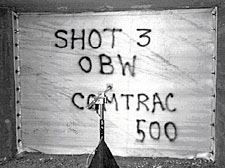 Figure 6. Anchored geotextiles secured to building frame acting as a 'catcher system.' Photo courtesy of Cintec |
Retrofitted Reinforced Masonry
Reinforced masonry is stronger and more ductile than unreinforced and is capable of resisting relatively high out-of-plane loads ? loads that act perpendicularly to the surface of the wall ? depending on the level of reinforcement. Retrofitted reinforced masonry uses techniques developed in the building restoration industry, where existing structural masonry is diamond core drilled from the roof to the foundation and specially designed grout inflated masonry anchors are installed and allowed to cure. The system has been tested to 125psi and 284psi-ms and can be used to secure blast-proof windows within masonry walls, combining window security with masonry strengthening.
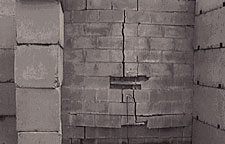 Figure 7. Rear view of the retrofitted reinforced masonry hollow block wall after loading with a blast wave from 200kg TNT at 12.5m. Photo courtesy of Cintec |
Internal Concrete Skin
There are certain situations where the blast load is so large that it is not possible to provide the required level of protection using the conventional retrofitted techniques described above. In such cases, the only solution is to retrofit the building with an internal concrete skin. This is an effective but expensive solution. A full structural analysis is required to determine whether it is necessary to underpin the foundations to resist the additional dead loads. Also, additional structural reinforcement may be required to strengthen the building frame in order to resist the huge dynamic loads likely to arise and prevent building collapse. Further, there will be loss of space inside the building equivalent to the thickness of the concrete skin and the necessary "air gap" behind the existing wall. In such designs, the existing outer wall is assumed to fail under blast load and, in doing so, it will deflect inwards significantly. The remains of the masonry wall and the blast wave then impact on and are
resisted by the internal concrete wall.
Durisol Block
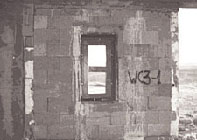 Figure 8. Durisol Block places an internal concrete skin inside a modular formwork. Photo courtesy of Cintec |
Summary
Existing masonry walls can be strengthened in a variety of ways to resist the effects of explosions. Comparisons between each method are summarized in Table 1. It is often possible to combine two or more systems into a hybrid scheme capable of resisting loads greater than the sum of the individual systems ? a "united we stand, divided we fall" approach. Fundamentally, there is no substitute for stand-off, and security arrangements must be tested against the ease with which it is possible to deliver and detonate an explosive device. It is often possible to mitigate against the effects of explosions by adopting changes to established procedures without making alterations to the building structure. However, if all those procedures are circumvented, there is no substitute and existing masonry buildings must be retrofitted in some way.
| System | Wall Type | Costs | Suitable for Windows | Remarks | ||
| Load-bearing | Infill | Products | Installation | |||
| Steel Column and Plate | Yes | Yes | Med/High | Med/High | Yes | Requires very detailed design and may require complicated installation. Must provide load path to the foundations. |
| Steel Stud Partition | Yes | Yes | Low/Med | Med/High | Yes | Lower blast loads than steel column and plate, requires detailed design and may require complicated installation. Must provide load path to foundations. |
| Elastomeric Spray | No | Yes | Low | High | No | Requires extensive wall preparation and complete reprovision of internal building services. |
| Geotextiles | No | Yes | Low | High | No | Same as above. |
| Retrofitted Reinforced Masonry | Yes | Yes | Med | Med | Yes | Buildings can remain occupied during installation process. The system can also act as a seismic upgrade. |
| Internal Concrete Skin | Yes | Yes | High | High | Yes | Very robust ? will resist the highest threat levels. Requires detailed design and reduces internal floor area. Must check foundation capacity. |
| Durisol Block | Yes | Yes | Med | Med | Yes | Similar to above, but for lower blast loads. Must check foundation capacity. |
Acknowledgements
Figures 1 and 2 are taken from Blast Effects on Buildings, Thomas Telford, London, 1995 and are reproduced with permission from the editors G.C. Mays and P.D. Smith. The author also wishes to acknowledge the assistance provided by Ed Conrath of the U.S. Army Corps of Engineers' Protective Design Center during the preparation of this article.
About the Author
Stephen P. Ward, Eur Ing, CEng, MICE, MIExpE is a division manager at Cintec International Ltd. His division is responsible for research and development, marketing, and subsequent project management of contracts involving dynamic loads on masonry. He can be reached via email at solutions@cintec.com.












